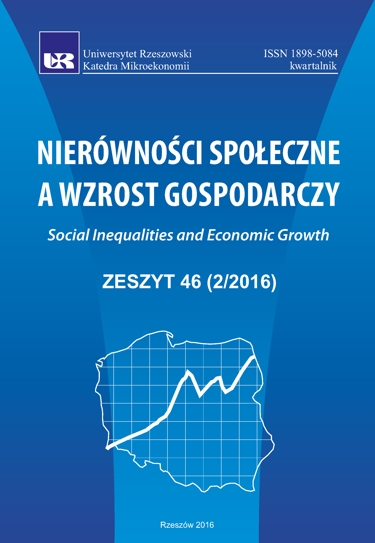Age Management as a Way of Counteracting Social and Economical Inequalities and Inter-Generation Conflicts in Enterprises
DOI:
https://doi.org/10.15584/nsawg.2016.2.25Keywords:
age management, ageing labor forces, subjectivity, labor marketAbstract
For over 30 years, the aging population and low fertility rates in Western Europe are regarded as threats to the labor market. According to forecasts, in 2050, working age persons will constitute only 56% of the population. Therefore, a need to employ those at the retirement age or even be-yond will arise. Older people who wish to remain in the labor market, however, are often discriminated because of age and encounter a number of difficulties often associated with false beliefs about their ability to function effectively within an organization. Thus, corporate attitudes towards employment of older people should change to increase the readiness to make relevant changes in the work environment. One must ask how to manage human resources more rationally and effectively in order to utilize – at a profit for all parties – a diversity of knowledge, experience and needs of employees at different ages. A solution can be an active, preventive age management policy, which would result in improvements in the work environment and change the corporate culture, health promotion and individualized ways of increasing opportunities for effective functioning. It would also allow not only to maintain productivity and quality of work, but also be beneficial for employees of all ages. Additionally, thanks to an organizational culture that promotes capitalizing on diversity and respects the subjectivity of workers one could minimize the problem of intergenerational gap and conflicts resulting from different needs, perspectives and ways of doing things by older and younger peopleDownloads
Download data is not yet available.
Downloads
Published
2020-11-10
How to Cite
Pawlak, J. (2020). Age Management as a Way of Counteracting Social and Economical Inequalities and Inter-Generation Conflicts in Enterprises. Social Inequalities and Economic Growth, 2(46), 408–418. https://doi.org/10.15584/nsawg.2016.2.25
Issue
Section
Articles
License
Copyright (c) 2016 University of Rzeszow

This work is licensed under a Creative Commons Attribution-ShareAlike 4.0 International License.


